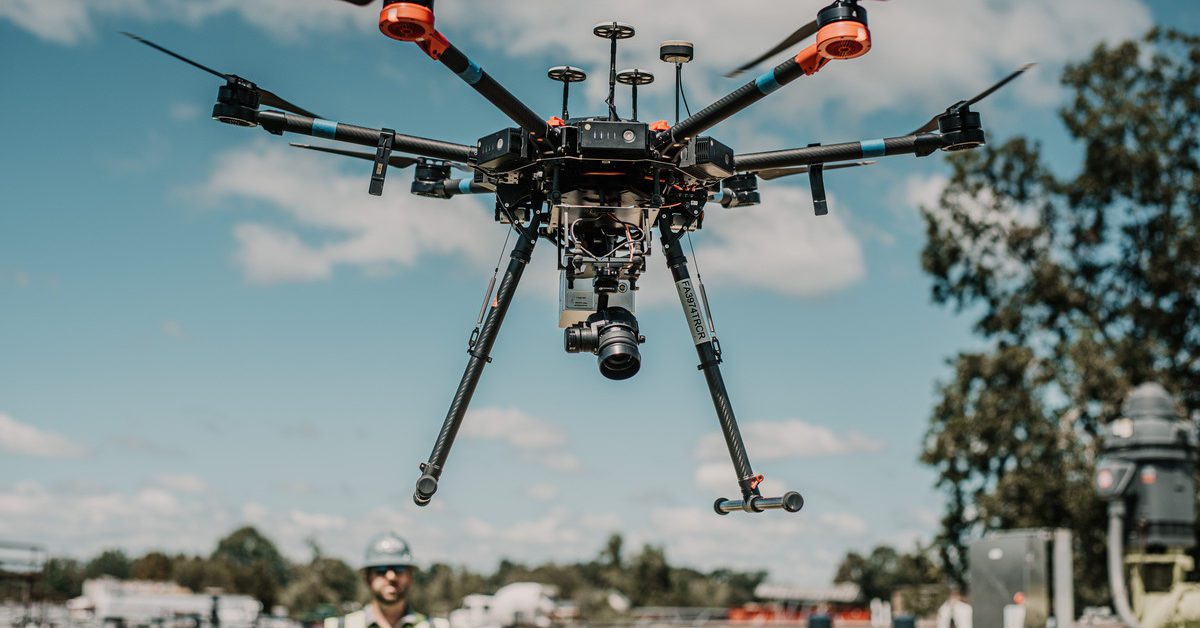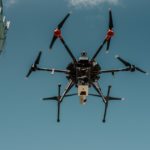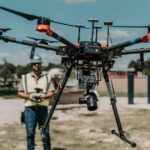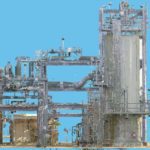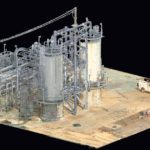Power line inspections are critical for maintaining infrastructure and keeping the power on for homes and businesses. Inspections must be performed regularly to detect early damage and potential problems. They are also conducted after storms and other disasters to look for damage and prepare for repairs.
Before drones, power line inspections have typically been performed manually, with inspectors climbing the lines, or by helicopter. Manual inspections and helicopters are time-consuming, dangerous, and much more expensive.
Today, drones are being used to perform power line inspections more often, because they perform inspections safely, quickly, and cost-effectively. This article will look at how drone inspections are conducted, the many benefits of using drones, and how much they cost. It will also answer some of the most frequently asked questions about drone power line inspections.
Why Are Drones Used for Power Line Inspections?
Drones are useful for many types of inspections. They can reach great heights safely and maneuver easily around almost any structure. Workers are able to perform inspections in complete safety.
Drones can be equipped with state-of-the-art technology, known as payloads, such as high-resolution cameras, thermal imaging, and LiDAR sensors.
Combining cutting-edge imagining technology with the agility of drones is ideal for inspecting power lines safely. Problems can be detected early, helping to avert major future damage. Inspections can be conducted with no downtime. Keeping power lines can stay in operation during the entire inspection means that power is never interrupted.
What Are the Benefits of Drone Power Line Inspections?
Conducting power line inspections using drones has many benefits. Inspections done by drone are much safer than ones done manually and they are completed much more quickly. They are highly accurate as well. Drone inspections are less expensive than manual or helicopter inspections.
Safety
Drone inspections are much safer for inspectors than performing manual inspections. Power lines are inherently dangerous. Not only are they high above the ground, but they also transmit high-voltage electricity. In the past, power line inspectors have experienced falls and electrocutions while inspecting power lines.
Drones are able to complete inspections while inspectors stay safely on the ground, far away from dangerous electrical currents. There is very little risk when an experienced remote pilot flies a drone above power lines.
Not only do drones make the actual inspection experience safer, but they also improve safety for the public by identifying problems in the lines early. Thermal imaging is highly accurate in detecting hot spots. These are areas in the line where there are potential problems that can lead to disasters if not fixed promptly.
Fixing problems early prevents outages, dangers to the public, and even wildfires. The accuracy of drone inspections ensures safety for both inspectors and the communities in which the lines are located.
Speed
Manual power line inspections are incredibly time-consuming. They require teams of workers to travel along the routes of the power lines, repeatedly transporting and setting up equipment. It takes time for inspectors to climb the power line poles, and safety inspections need to be performed frequently.
Drones are able to quickly scale the height of the lines and trace their routes easily. There is no need for equipment to be hauled along and set up over and over. The drone is the only equipment that is required.
Because of the decreased manpower needed to complete drone inspections, there is less disruption to the company’s workflow. Fewer employees need to be pulled from their regular jobs. Quick inspections also mean lower costs.
Data that is collected from the drone’s payload is processed quickly. Inspectors can identify problems on the spot, so there is no need to send additional teams out to investigate. If the inspection is being done to assess damage to a power line, quick identification of any problems means power can be restored in less time.
Because manual inspections take a long time and a lot of manpower to complete, it is impractical to conduct them frequently. Helicopter inspections can be performed more quickly but they are very expensive, which is prohibitive to completing them often.
Drone inspections are quick and cost-effective so they can be done more frequently. This improves safety for the public and lowers downtime for power lines by catching minor problems before they cause major damage.
Improved Accuracy
Drones equipped with sophisticated swappable payloads are highly accurate at identifying even the smallest issues along power lines. Small details such as missing bolts or screws, rust and corrosion, and even birds’ nests are easily seen in high-resolution images.
LiDAR technology allows for the mapping of the power lines by creating detailed 3D images. LiDAR sensors emit light pulses and measure the time it takes for them to travel between the sensor and an object. The technology is highly accurate even in low light or in less-than-desirable weather conditions.
The 3D images that are created from the measurement of the light pulses are extremely accurate and detailed. Inspectors are able to review these images safely from the ground and inspect them as often as needed. These 3D images are much more detailed than standard images taken from the ground by a camera.
Thermal imaging can quickly identifies hotspots in the line, alerting inspectors to electrical problems and possible malfunctions. These are things that cannot be seen during a regular visual inspection. Early detection of electrical problems allows them to be addressed before there is major damage.
Combining these different technologies when performing drone inspections ensures that inspections are highly accurate.
How Much Does a Drone Power Line Inspection Cost?
The cost of a power line inspection with a drone varies depending on the scope of the project, location, and other factors. But its cost usually falls within a range of $1,000-$5,000 per day of inspections.
This makes drone power line inspections a great choice since manual power line inspections are very costly. An entire team of skilled workers must be paid hourly for a process that takes many hours to complete, along with costs related to travel and transporting heavy equipment. And helicopter inspections are even more expensive, with a helicopter costing anywhere from $4,000-$30,000 per day of inspections.
With their convenience and high level of accuracy, it might seem that drones would be an expensive option for conducting inspections. In fact, they are usually much less expensive than even manual inspection. This is due in large part to how quickly they are able to complete the entire inspection process.
For an accurate quote, contact our survey and mapping team so we can determine what technology will be needed to complete your project and the exact costs that will be involved.
FAQ
How Does a Drone Power Line Inspection Work?
If you are thinking about using a drone to complete your next inspection, you are probably wondering exactly how it will work. The process is quite simple. A qualified remote pilot will fly the drone that is most appropriate for your specific project.
The drone will fly above the power lines, capturing data from as many angles as needed, and a video stream of the inspection can be watched live from the ground. Images and 3D maps will be available remotely so they can be reviewed by your team at any time, as needed.
Can Drones Avoid Power Lines?
When flying drones near power lines, there are many ways to avoid making contact with the lines. A qualified and experienced remote drone pilot will be sure to keep the drone at a safe distance from power lines and in their line of vision at all times.
Drones themselves come equipped with sensors that detect power lines so they do not come into contact with them. They often use radar and optical sensors for this purpose. Newer technology, such as sensors that detect electric and magnetic fields are going even further to ensure that drones stay a safe distance from lines, even those that are very thin and difficult to see.
What Happens If a Drone Hits a Power Line?
If a drone does hit a power line, it can cause damage to the line and even possibly cause widespread power outages. This is why it is critical that an experienced drone pilot conduct the inspection of power lines. It is a technical job that should not be undertaken by someone who does not have extensive piloting experience.
The good news is that it is unlikely for anyone to be electrocuted by a drone collision into a power line. Electrical current doesn’t travel through the air, so as long as everyone involved in the inspection is on the ground and away from the lines, there will be no injuries to the inspectors or the pilot.
With the advanced technology that allows drones to accurately detect power lines, it is unlikely that the drone will hit a line.
Final Thoughts
Drones are able to conduct power line inspections quickly and safely. The data they gather is incredibly detailed and precise. Given all of these benefits, it might be surprising that drone inspections are also the most cost-effective method of inspecting power lines.
When drone inspections are conducted with appropriate equipment and by qualified pilots, there is virtually no risk to inspectors and the benefits are overwhelming. Consider using a drone for your next power line inspection to save time and money, and ensure your workers and the public stay safe.
